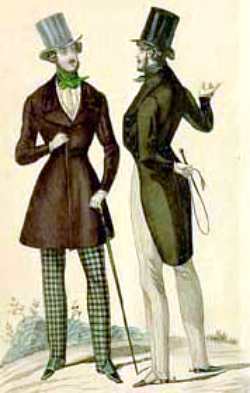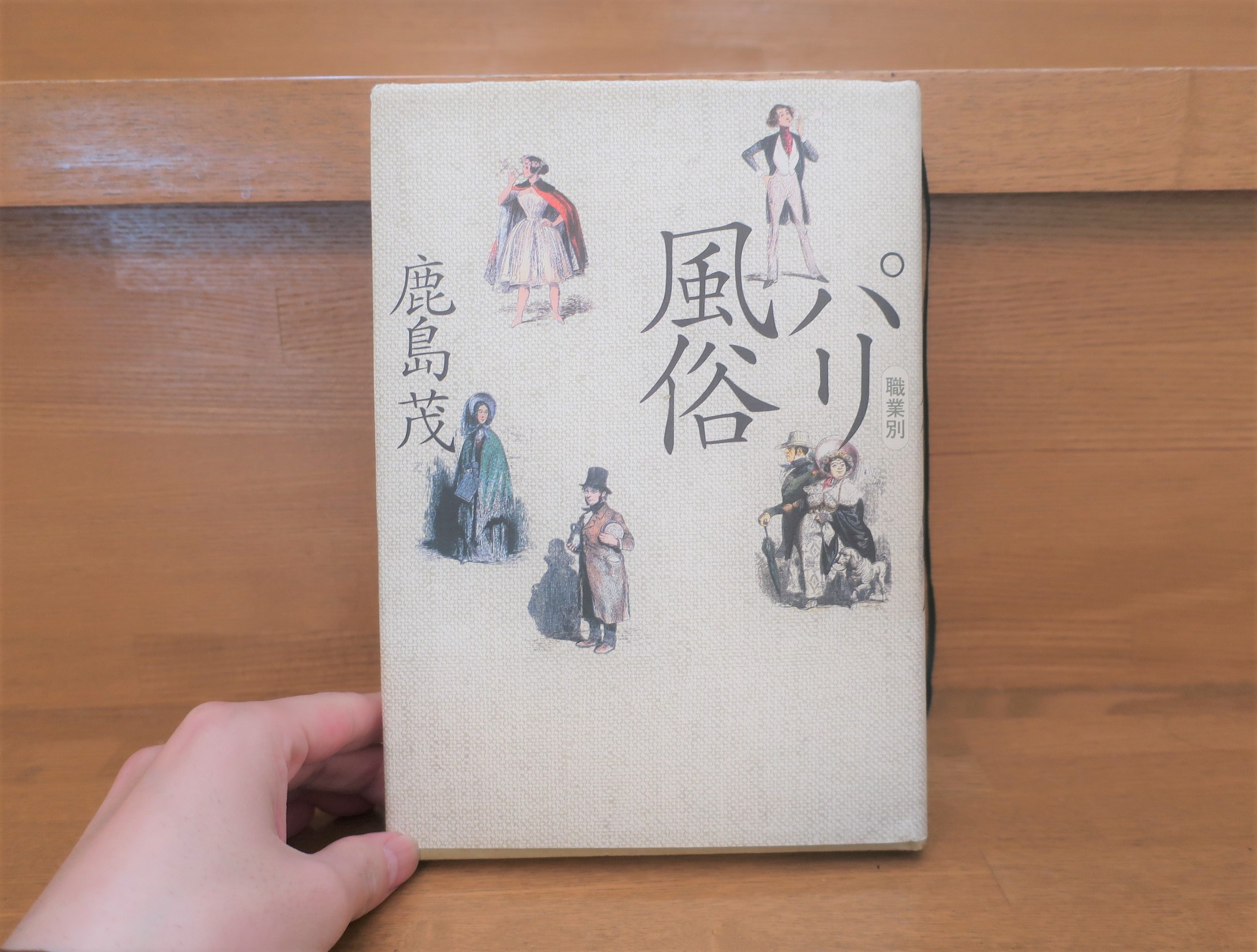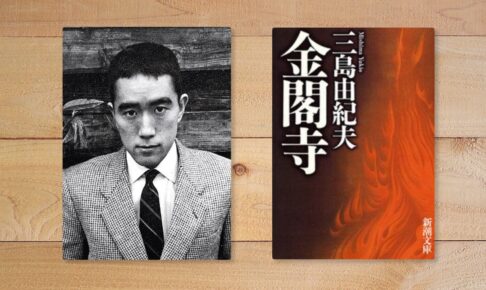Table of Contents
What is a "dandy," a Parisian dandy - Why are French men so popular in the historical background?
Previous Article"What is the relationship between a student and a grisette, a Parisian seamstress: the career paths and love lives of young people in 19th century France."In the following section, we looked at grisettes and students in Paris with reference to "Parisian Customs by Profession" by Shigeru Kashima, a French literature scholar.
In this article, I would like to look at one of the most memorable Parisian dandy "dandies" in the book.
What is the Parisian social scene where dandies live?
Before we look at the dandies themselves, Mr. Kashima speaks about the social scene in Paris. Let's look there first.
As a matter of course, it is difficult to conjure up concrete images of things that do not exist in Japan. The best example would be social circles. What exactly is a social circle?
First of all, everyone knows that the upper class consists of men and women. However, it is also clear that the social world is a completely different world from the world of men who control the real world of politics and economics. The reason is that at the center of this world are women. In short, the social world is another society with a different value system from that of the male-dominated society, which is based on the principle of "power" such as authority and competence, and the center of this society is always women. Only men who are liked by these women are allowed into the social world.
So, it is not the case that these two worlds exist without any relationship at all. At least in nineteenth-century France as depicted by Balzac, the surface world and the social world are like the men's and women's baths in a spa resort, separate at the entrance but vaguely connected at the back, in a structure in which "high society" exists only when these two mutually complement each other.
Therefore, it is not impossible for a young man with a desire to rise to the top to exit the social world. A proper entry through the front door requires, above all, time and patience. However, if one can gain the favor of a noblewoman in the social world, he or she can obtain a high-ranking position in the surface world without any effort. This is the French dream that inspired the youth of the 19th century.
Written by Shigeru KashimaParisian Sex Industry by OccupationP65-66
The Parisian social scene in the 19th century was structured much differently than we imagine it to be.
There, women were the main focus, and their position in society was determined by whether or not they were favored by them. If you were favored by the ladies, you could quickly climb the social ladder. This was the French dream for ambitious young men.
But here is a simple question that comes to mind. How does one enter a social circle in the first place? Are there any qualifications to get in? Kashima explains as follows.
So, what kind of qualifications are needed to join a social circle? There are no specific qualifications such as a university degree. Of course, a title of nobility or wealth is a requirement, but it does not seem to be a sufficient condition. In other words, the qualifications to enter social circles are rather vague, unlike those in the public sphere.
This "ambiguity" is in fact one of the driving forces that propel the French version of the Bildungsroman, a "human comedy," forward. The reason is that this "ambiguity" makes it possible to cast young men of diverse origins as protagonists, and the "ambiguity" itself can be a drama. Through the protagonist who struggles with such "ambiguity," it is possible to involve a wide range of readers in the story of his career.
Shigeru Kashima, Parisian Customs by Occupation, p. 66
Parisian society in the 19th century was open to everyone, whether they could make it or not.
That is why there was the French dream that anyone with good looks and talent could rise to the top.
Rastignac, the hero of "Grandpa Gorio", the epitome of a young man who aspires to be a dandy.

From here we see a young man who aspires to be a social dandy.
A prime example of a protagonist who chooses to enter the world of society is, of course, Rastignac in "Pere Goriot. The eldest son of a poor aristocrat with many children in Angoulême, Rastignac aims for the front door when he first arrives in Paris, but soon gives up on it.
At first, he was determined to devote himself wholeheartedly to his studies, but he soon came to realize the necessity of affinity, and when he realized how important women were in his social life, he suddenly changed his mind and decided to venture out into the world of society to find a lady to back him up" (my translation).
The reason for this sudden change of heart was that, upon returning home, he saw his family in dire straits and realized that he would never make it if he did not quickly rise through the ranks of society. In fact, Rastinyak secretly believed that he had the qualifications to enter the social world.
If a young man is passionate and brilliant, and if his passion and brilliance are backed up by his elegant bearing and dignified good looks that easily capture a woman's heart, then there is no way the ladies of society will leave him alone.
The first requirement for entry into society is to be liked by the ladies who are the center of society, and therefore, beauty and elegant deportment, passion and flair, or, to narrow it down to two, beauty and flair. This is exactly what Madame Eugenie Foix, who was in charge of the "Dandy Le Fat" section of "Self-Portrait of a Frenchman," said.
The real dandies have little variety. As far as I know, there are only two: the dandy of beauty and the dandy of wit."
Well, it would be better if he had both good looks and talent, but either one of them would be fine. Rastignac is not an exceptionally handsome man, as is clear from Balzac's ambiguous description of him as having "a kind of powerful good looks," but he is a rather masculine and burly type of man, but his talent and passion more than make up for it. In other words, Rastignac is a "brilliant dandy. However, it is not enough to be a brilliant but completely ugly man; even a "brilliant dandy" must have a certain degree of good looks. The opposite is also true: good looks are not acceptable in social circles without talent. In other words, good looks and intelligence are the minimum requirements for socializing.
Shigeru Kashima, Parisian Customs by Occupation, p. 67-68
Père Goriot (Grandpa Goriot).is truly the story of Rastignac, a young man trying to break into the Parisian social scene.
The title of this work is "Old Gorio," a blunt title that doesn't really inspire the "desire to read," but it is in fact a very exciting work about the process of the rise of a young man in Paris.
The protagonist, Rastignac, gave up early on following a career path in the front world. His family was too poor to afford it. His goal was to become a dandy, a man who is favored by noble ladies and quickly rises through the ranks of society.
So, what kind of dandy is the top dandy to aspire to be among such dandies?
Kashima draws from Balzac's "The Human Comedy," a group of novels in which he writes: "The human comedy is a story about a man and a woman who are both human and human.
Who, then, is the equivalent of the "real dandy" in "The Human Comedy"?
In mid-April 1815, a young man was strolling along the promenade of Tuileries Park, like a raging beast that knew its own strength and was moving forward with ease. The bourgeois women looked back openly to see the young man. The ladies, on the other hand, did not look back, but they waited for him to turn around, and they wanted to remember his enchanting good looks for later enjoyment. For he was so handsome that they could have replaced his face with the body of the most beautiful of the ladies" (Balzac, "The Girl with the Golden Eyes").
Balzac uses the word "beast of prey," and Henri de Marsay certainly possesses the confidence and suppleness of a beast of prey, like a lion or a tiger. Not only Henri de Marsay, but all the real dandies of Balzac's time must have had these beastly characteristics. That is why they were called "lions" or "tigers" in reality.
For example, Maxime de Trailles, the dandy who appears second only to Henri de Marsay in the "Comédie Humaines," is a member of this "lion" or "tiger" group. In the beginning of "Père Goriot," Rastignac is reminded of this fact.
Rastignac felt an intense hatred for this young man. First, Maxime's beautifully curled blonde hair showed him how unattractive his own hairstyle was. Second, Maxim's boots were spotlessly clean and polished, while his own boots had a hint of mud on them, even though he had walked so carefully. Finally, Maxim wore a frock coat that was chic and cinched, making him look almost like a beautiful woman, while Eugène was wearing a black tailcoat, even though it was 2:30 in the afternoon. It was hard not to admit that the talented boy from the province of Charente had already been outdone by this dandy in terms of clothing and dress.
Rastignac would later become a member of society as a "brilliant dandy," but at this stage, he was still just a man trying to "look like a dandy," longing to be a real dandy. But at this stage, he is still just a man who is trying to look like a dandy, and is still just a man who is trying to look like a dandy. No matter how brilliant a man may be, he cannot be a real dandy unless he meets the first requirement of elegance in dress.
Mrs. Fore explains the difference between a real dandy and a wannabe dandy: "A real dandy is a dandy, and a wannabe dandy is a dandy.
The relationship between the aspiring dandy and the real dandy is tantamount to the relationship between parody and art. The former follows the latter step by step. The former follows the latter step by step, but the ridiculous never catches up, even if it is on a par with the sublime. Whereas the real dandy seeks to defend the title of dandy, the aspiring dandy strives to earn it, to be worthy of it, to prove that he or she is one. It is a constant study, a thought that never rests for a moment."
In short, the dandy aspirant and the real dandy are like asymptotes, and the aspirant will never catch up to the real dandy, no matter how hard he studies.
Shigeru Kashima, Parisian Customs by Occupation, p. 70-71
I think it is clear from this that being a dandy requires tremendous effort and research. Moreover, to be a true dandy, it is not enough just to have good looks. From this point on, you also need to have talent. Let's continue to listen to Mr. Kashima's words.
Moreover, it is not only about the elegance of the outfit, but also about the art of witty speech, or in other words, the art of wit. If the way you dress is not good enough, you may think that you can compete with your wit, but reality is not so easy. Lucien de Lubanpre, who has just left Angoulême for the Opéra in Paris, the seat of the dandies, is surprised to encounter this barrier of talent that separates him from the rest of us.
Lucien was amazed at the clever phrasing and on-point wit with which these men responded to him, and he was stunned by their so-called sparkling wit and alarming phrases. The carefree nature of the conversation and the ease of their demeanor left him in a daze. In the morning, he had feared the luxury of commodities, and now he found that same luxury in thought. By what secret method do these men instantly find such withering reflections and quick-witted replies? I, for one, can only come up with such things after thinking them through for a very long time.Disillusioned."(Translated by Ryoichi Ikushima)
It is this "ambiguity" that confounds the aspirants who decide to enter through the social entrance to run up the ladder of success. Because it is a secret method, it cannot be learned from a manual. Like the ninjutsu, there is no other way but to choose a good teacher and observe his or her every move while sitting or lying down in a comfortable place to steal the secret.
Shigeru Kashima, Parisian Customs by Occupation, p. 72
The ability to exchange words instantly and with poise. A wit that hits the nail on the head. A sparkling wit and warning. And the carefreeness of conversation and demeanor.
A "consciousness of language" that is uniquely French.
It was these dandies who mastered this in their relationships and social circles. This is not something that can be learned in a short time.
That is why would-be dandies followed senior dandies, observing their every move and trying to steal their secrets.
In "The Dandy," Madame Foix describes Assir, the son of a wealthy merchant who, after a chance encounter with Albert, a real dandy, strives to emulate him.
From that day on, Assil was not allowed to take a moment's rest or pause for a moment. Albert was a model, a god, and an ideal for Assil. He dressed, shod, and wore a hat just like Albert, had a carriage made just like Albert's, and bought his own racehorse to race in the same way.
On the other hand, real dandies who are followed around by these dandy applicants, surprisingly, recognize the utility of this type of "student. In other words, they keep a "dandy" next to them in order to emphasize their "authenticity. Balzac describes the symbiotic relationship between these two types of dandies as follows.
Henri de Marsay treated this young man, Paul de Manerville, as a friend because he wanted to use him as a social draw, just as a daring speculator might use a stockbroker as a confidant. For Paul de Manerville, on the other hand, whether de Marsay's friendship was fake or genuine, it was a social matter, and he thought he was using his best friend in his own way" ("The Golden-Eyed Girl").
Well, now I understand. The dandies in "The Human Comedy" were always "hanging out" with each other in order to take advantage of each other, just like the juvenile delinquents. However, even if they could "hang out" in the first stage of roaming the corridors of the Boulevard and the Opéra, they could not work together in the final stage of becoming the mistress of a society lady, because the real dandies and the dandies would not be able to work together. This is because a real dandy and a wannabe dandy have different levels of women to deal with, even in the same social circles. But, after all, even here the latter is eager to imitate the former.
Shigeru Kashima, Parisian Customs by Occupation, p. 73-74
This part is even painful now. The dandies are hanging out with each other, but they are only using each other. This is a phase of human beings that can be found in any time and any world, regardless of 19th century Paris.
And one last thing is important to understand about the ecology of the Dundees.
As I have said many times, the best dandies, like Henri de Marsay, are beasts of prey, like lions and tigers. Therefore, the prey that they are after, i.e., the ladies of society, must be the best of the best. In other words, she must not only be a socialite, but she must also be young, extremely beautiful, and available to be used as a money-grubber.
In addition, there is another important condition. The husband of the noblewoman. The husband must be a man of discretion, free from jealousy, who not only tolerates his wife's mistresses but also welcomes them into the home as "friends," with a free pass. The former is too old and hardly able to play the wife's part, while the latter is so ambitious to make it in the world of society that he is more than happy to use his wife as a means to achieve this.
Shigeru Kashima, Parisian Customs by Occupation, p. 74-75
Why did the young men try to be dandies? Because that is how they will get ahead. And that prey is the ladies of society. The young men are competing with each other in the art of attracting the "best of the best" in order to find a way to win them over.
And, as explained above, this was possible because of the climate of the time in which mistresses were openly recognized. Even in those days, adultery was publicly condemned and punishable. However, the point is that one only had to not make it public. It seems that one of the battles of men at that time was how to rise to the top by using such mistresses.
For French youth, this was not just a matter of love, but a fight for one's status and survival. Even if they studied and worked properly, their lives would not improve and they would not be able to rise in the ranks. Even if they could, it would take a great deal of time and effort. There was no way I could afford it. Then, there was no choice but to make a quick turnaround. If he becomes a dandy and joins a social circle, he may be able to find a way out.
When you think about it this way, you can see how serious a problem "being popular" was. The French, who have always been open-minded and good at speaking with words, have taken it to the ultimate level of how to be popular. This would be a tremendous thing.
I don't know what people were like back then, but it is a world full of calculations. Moreover, not only on the men's side, but also on the women's side, there is a fierce battle to get ahead in the social world. It seems that both sides had reached a tremendous level of romantic skill.
After all, if you read French literature, you will see that they are already taking over and when they are done with you, they just drop you and move on to the next person. The family environment, for example, is already broken (perhaps because this is the world of literature).
Even if you pursue love, it will eventually cool down and the passion will fade. If they still live together, it is probably because there is love there, or because they need to live together for their lives. However, it is important to consider whether such a thing really exists for them.
They jumped into this social world for their own career advancement. Family stability is not considered at all. This may be typical of France, which values the "individual. It is completely different from the logic of the "family" as in Japan.
At any rate, I hope you got some sense of how tremendous the Parisian dandies are.
There is an image of French men being popular, and as you have all read up to this point, of course they are popular. This is because of their historical and cultural backgrounds.
Japanese men are no match for them.
However, this mentality of Japanese men, like that of France, has been shaped by historical and cultural backgrounds.
Therefore, it is not a question of which is better and which is worse.
We tend to think they are superior because we see only the glorious side of Europe through TV and movies, but they have both good and bad sides just like we Japanese do. However, like us Japanese, they have both good and bad sides. If we look at them with rose-colored glasses and think, "This is why Japanese people are so bad," and self-deprecate too much, it will only make us suffer. Let's moderate it. Both sides are the same. We have to do what we can do.
Now, I know this is a bit off topic, but I'd like to talk about these dandies in the context of Balzac'sOld Gorio."and "Disillusionment" and Stendhal's "Red and Black" describe their ecology with great clarity.
Also, Zola's"A Share of the Prey."andThe Gobbledygook., ,Bonheur des Dames Department StoreI also highly recommend the detailed descriptions of these male-female interactions in such places as
In his book "Parisian Customs by Profession," there are many other people such as society ladies, lawyers, doctors, teachers, police, actresses, and many more. I think you should read this book because it is full of very interesting facts.
The next article, "I Want to Buy a Carriage!" by Shigeru Kashima, depicts the path taken by a man who wants to break into the social scene. which describes the path taken by a person who tries to break into the social world. This book is also very interesting and we hope you will continue to read it.
The above is "Why are French men so popular?
*Addition on January 17, 2023
In this article we looked at the Parisian dandies, but we discuss when and where the very existence of dandies began in the first place in the following article. Please refer to this article as well. I am sure you will be surprised if you read it. I was also astonished.
Next Article.
Click here to read the previous article.
Related Articles







































